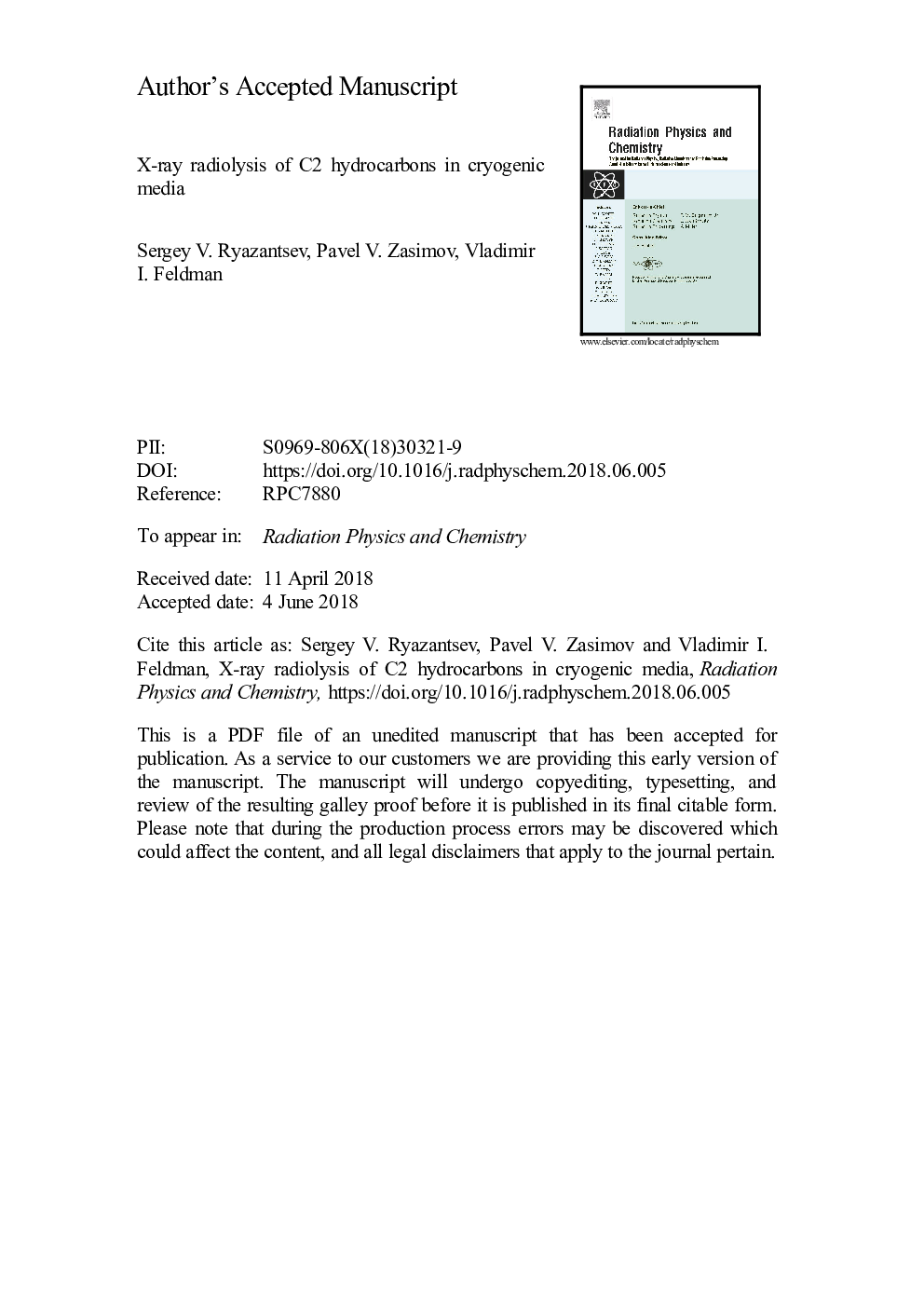| Article ID | Journal | Published Year | Pages | File Type |
|---|---|---|---|---|
| 8251323 | Radiation Physics and Chemistry | 2018 | 32 Pages |
Abstract
The radiation-induced transformations of acetylene, ethylene and ethane molecules under X-ray radiolysis in cryogenic media (noble gas matrices and neat hydrocarbon ices) at 5â¯K were characterized by FTIR spectroscopy. The radiation-chemical yields of decomposition of isolated hydrocarbon molecules were estimated in different solid noble gas matrices (argon, krypton and xenon). It was found that the radiation resistance of hydrocarbons at molecular level increases in the order ethane < ethylene < acetylene. For ethylene and ethane, the decomposition yields in argon are remarkably higher than those in krypton and xenon, which was explained by possible involvement of “hot” ionic fragmentation in argon and matrix effect on the excess energy dissipation. In all the cases, irradiation of matrix isolated molecules leads to progressive dehydrogenation, which should finally lead to the C2 carbon species. In the case of ethane, an evidence for prompt deep dehydrogenation yielding acetylene and vinyl radical was found even at low doses, particularly in argon. In contrast to the radiolysis of isolated molecule, irradiation of acetylene ice leads to predominating radiation-induced condensation. Possible implications of the results for basic radiation chemistry and astrochemistry are highlighted.
Related Topics
Physical Sciences and Engineering
Physics and Astronomy
Radiation
Authors
Sergey V. Ryazantsev, Pavel V. Zasimov, Vladimir I. Feldman,
